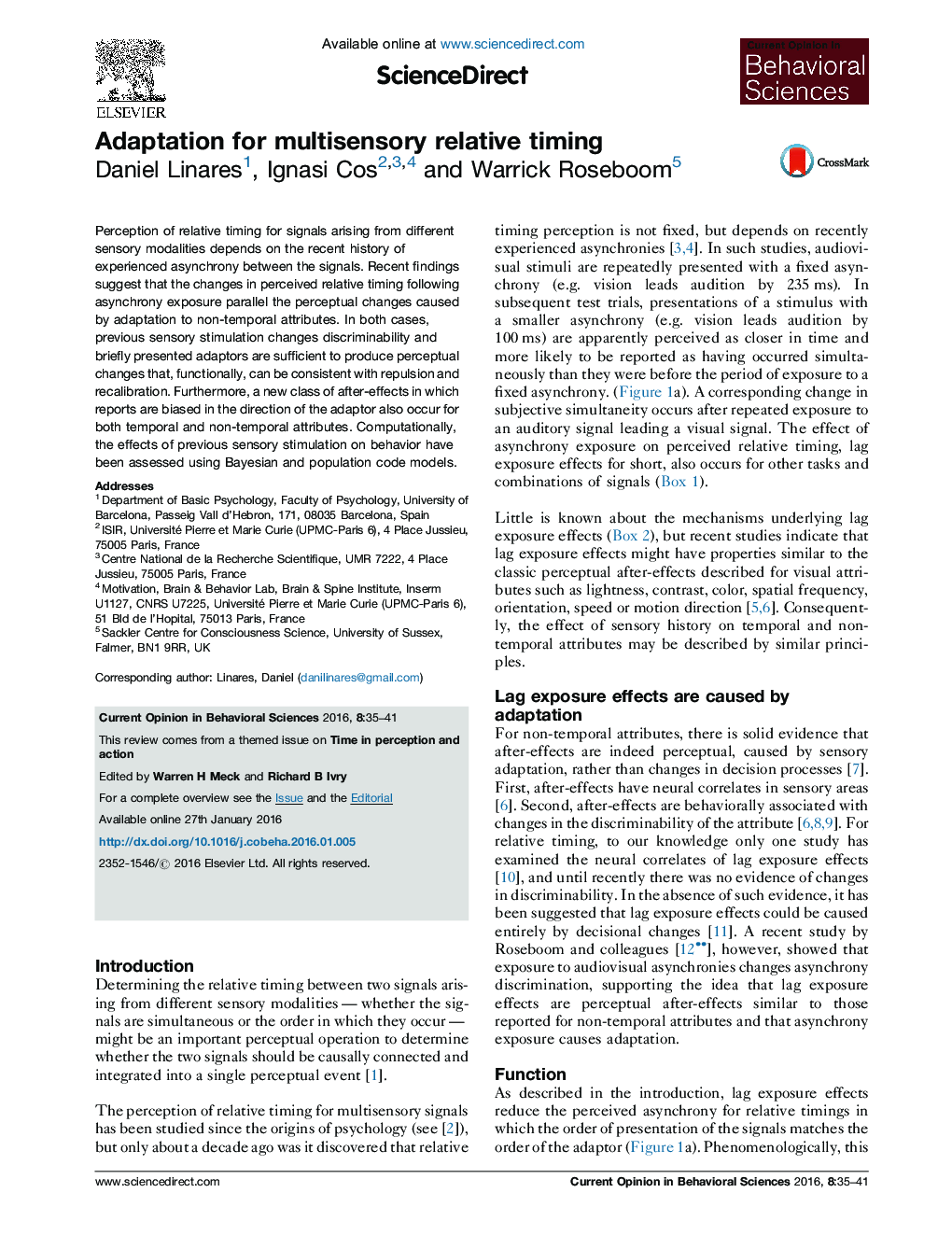| کد مقاله | کد نشریه | سال انتشار | مقاله انگلیسی | نسخه تمام متن |
|---|---|---|---|---|
| 6260472 | 1613082 | 2016 | 7 صفحه PDF | دانلود رایگان |
- Repeated exposure to multisensory asynchrony changes time perception.
- A single asynchrony exposure is sufficient to produce similar changes.
- Changes in time perception are often similar to classic perceptual after-effects.
- Changes in time perception are sometimes opposite to classic perceptual after-effects.
- Bayesian and population code models have been used to assess underlying mechanisms.
Perception of relative timing for signals arising from different sensory modalities depends on the recent history of experienced asynchrony between the signals. Recent findings suggest that the changes in perceived relative timing following asynchrony exposure parallel the perceptual changes caused by adaptation to non-temporal attributes. In both cases, previous sensory stimulation changes discriminability and briefly presented adaptors are sufficient to produce perceptual changes that, functionally, can be consistent with repulsion and recalibration. Furthermore, a new class of after-effects in which reports are biased in the direction of the adaptor also occur for both temporal and non-temporal attributes. Computationally, the effects of previous sensory stimulation on behavior have been assessed using Bayesian and population code models.
Journal: Current Opinion in Behavioral Sciences - Volume 8, April 2016, Pages 35-41
